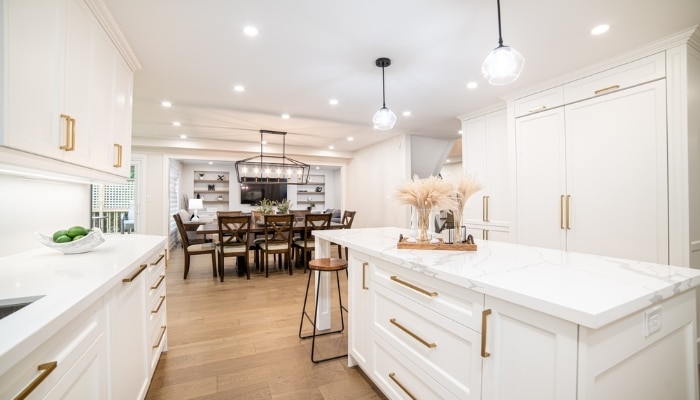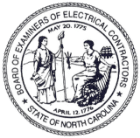
The Ultimate Guide to Recessed Lighting Placement & Installation for Raleigh Homeowners
Recessed lighting, also known as can lighting or pot lighting, is a sleek and modern way to illuminate your home. It offers a clean, unobtrusive look while providing excellent task and ambient lighting. Whether you’re upgrading your home’s lighting or planning a full remodel, understanding the best placement, ideal fixture types, and installation tips is crucial for getting the best results. This Recessed Lighting Guide will help you make informed decisions to enhance your space.
In this guide, we’ll explore:
- The best placement strategies for recessed lighting
- The best types of recessed lights for different areas of your home
- DIY installation tips and common mistakes to avoid
- Why hiring a licensed electrician in Raleigh, NC is the safest and most efficient choice
Best Placement for Recessed Lighting
Proper placement is key to ensuring your recessed lighting enhances your space without creating unwanted glare or shadows. Consider these strategies for different areas of your home:
Living Rooms & Family Rooms
✅ Layered Lighting: Use recessed lights to complement existing floor lamps, chandeliers, or pendant lights. ✅ Perimeter Lighting: Install cans about 12-18 inches away from the walls to create an even wash of light. ✅ Spacing Rule: Keep lights 4-6 feet apart for uniform coverage without excessive brightness.
Kitchens
✅ Task Lighting: Place lights directly above countertops, islands, and workspaces to eliminate shadows while cooking. ✅ Under-Cabinet Supplement: Combine recessed lights with under-cabinet LEDs for better task lighting. ✅ Avoid Shadows: Position lights slightly in front of workspaces rather than directly overhead.
Bathrooms
✅ Shower-Safe Fixtures: Use wet-rated recessed lights inside shower stalls and above tubs. ✅ Mirror Lighting: Place lights directly above the mirror (or install sconces for better face illumination).
Hallways & Entryways
✅ Even Spacing: Install lights 5-8 feet apart to ensure uniform brightness. ✅ Wall Washing: Position cans near walls to highlight artwork or architectural details.
Bedrooms
✅ Soft Glow: Use dimmable recessed lights to create a cozy atmosphere. ✅ Accent Lighting: Position lights near feature walls or ceilings for a designer touch.
Best Types of Recessed Lights
Choosing the right size, trim, and bulb type will determine how effective and aesthetically pleasing your recessed lighting will be.
1. Size Matters
- 4-inch: Best for accent lighting or small spaces.
- 5-inch: A versatile size for both task and ambient lighting.
- 6-inch: Ideal for general lighting in large rooms.
2. Trim Types
- Baffle Trim – Reduces glare; great for living rooms and bedrooms.
- Reflector Trim – Enhances brightness; ideal for kitchens and workspaces.
- Gimbal Trim – Adjustable angle; perfect for highlighting artwork or walls.
- Shower Trim – Wet-rated for bathrooms and outdoor use.
3. Best Light Bulb Options
- LED: Energy-efficient, long lifespan, and available in warm, neutral, or cool tones.
- Halogen: Brighter than LED but less energy-efficient.
- Smart Bulbs: Can be dimmed and color-adjusted via a smartphone app.
DIY Installation Tips & Common Mistakes to Avoid
Many homeowners attempt to install recessed lighting on their own, but improper installation can lead to poor lighting, electrical hazards, or even damage to your ceiling. If you plan to tackle recessed lighting yourself, keep these tips in mind.
DIY Tips for Installing Recessed Lighting
✅ Plan Before You Cut: Use painter’s tape to mark where lights will go before cutting into drywall. ✅ Check for Joists: Avoid placing fixtures where ceiling joists may obstruct the installation. ✅ Use Remodel Cans for Existing Ceilings: If you’re retrofitting lights, use remodel housing instead of new construction housing. ✅ Install IC-Rated Housings in Insulated Ceilings: Prevents overheating and reduces fire risks. ✅ Choose Dimmable LED Bulbs: Offers flexibility in brightness and energy savings.
Common DIY Mistakes to Avoid
❌ Overloading the Circuit: Too many recessed lights on one circuit can cause breaker trips. ❌ Incorrect Spacing: Lights placed too close together can create an overwhelming brightness, while too far apart can leave dark spots. ❌ Using Non-Rated Fixtures in Wet Areas: Bathrooms and outdoor spaces require wet-rated or damp-rated recessed lights. ❌ Forgetting About Insulation: Non-IC-rated fixtures installed near insulation pose a fire risk. ❌ Skipping the Permit: Electrical work may require a permit in Raleigh, NC. Check local codes before starting.
Why You Should Hire a Professional Electrician in Raleigh, NC
While DIY recessed lighting installation may seem cost-effective, hiring a licensed electrician ensures safety, efficiency, and compliance with building codes. Here’s why you should consider professional installation:
1. Electrical Safety & Code Compliance
- A professional ensures your lighting is installed to meet Raleigh’s local electrical codes.
- Incorrect wiring can lead to fire hazards or electrical shorts.
2. Proper Placement & Design Expertise
- Electricians know the best placement techniques to achieve even lighting without glare or shadows.
- They ensure balanced illumination and proper alignment with ceiling joists.
3. Time & Cost Savings
- Avoid costly mistakes that could require redoing the installation.
- Get energy-efficient LED solutions that help lower utility bills.
4. Warranty & Peace of Mind
- Many electricians offer warranties on their work, ensuring long-term reliability.
- No risk of DIY errors leading to expensive repairs.
Final Thoughts
Recessed lighting is an excellent way to modernize your home, improve visibility, and enhance ambiance. However, correct placement, fixture selection, and installation techniques are crucial for the best results.

